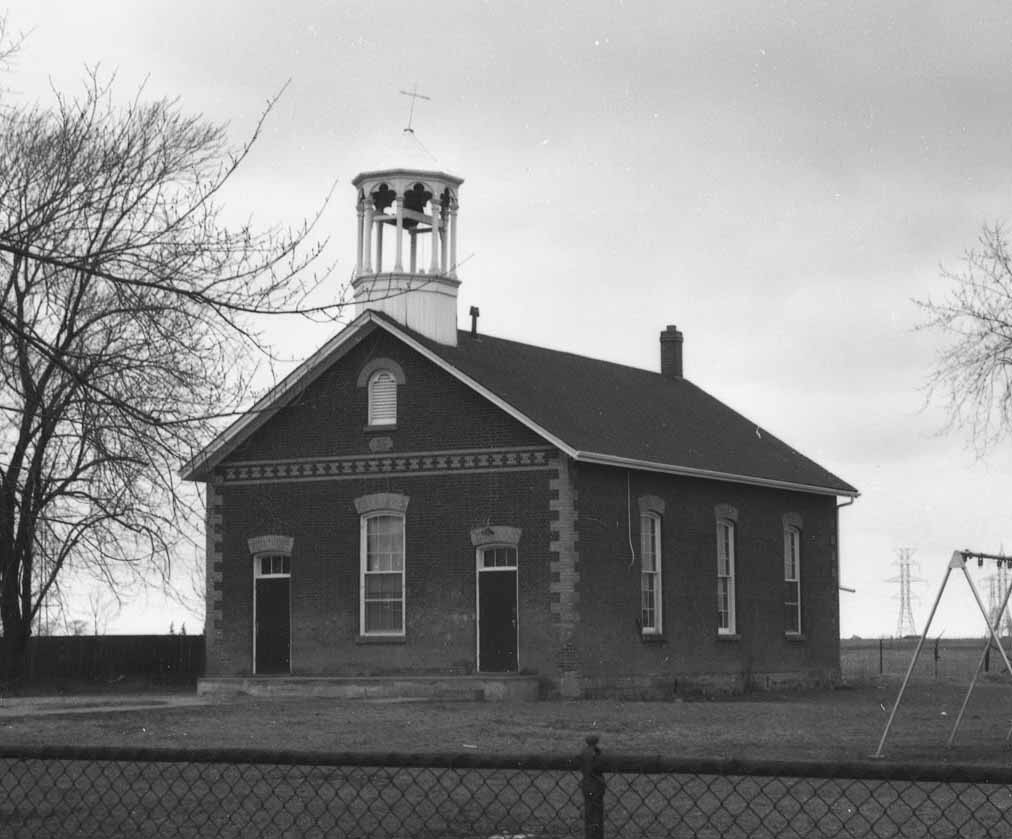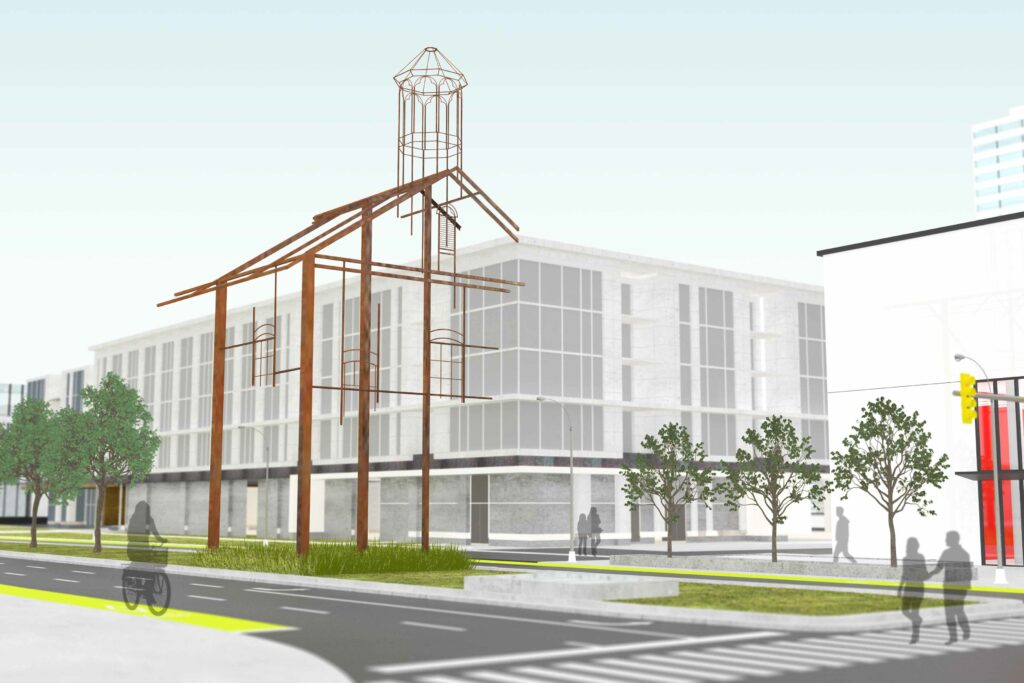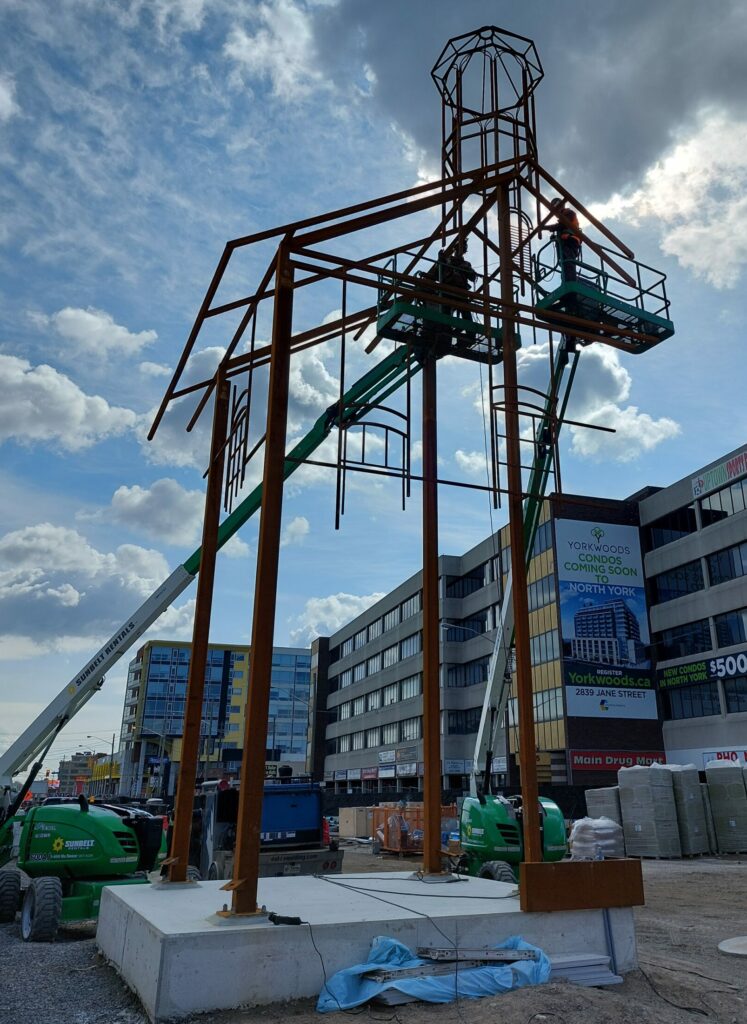
Designed by Brandon Vickerd, artist and professor of visual arts at York University, the 41-foot sculpture made out of Corten steel is titled “The Heights” and is meant to evoke how the history of a place informs its present and future.

The seed of “The Heights” began in 2020, when the Duke Heights Business Improvement Area (BIA) put out a public call for professional Canadian artists to propose a landmark public artwork that would bring back and reassert the Finch-Keele community after years of construction in the area preparing for the forthcoming Light Rail Transit (LRT) line.
Among the resulting 80 applicants, five artists – including Vickerd – were chosen to submit detailed proposals. Vickerd knew the BIA wanted something that addressed the history and future of the location, so he began researching what architecture had existed near the LRT site in the past. He discovered that, between 1873 and 1956, the one-room Elia Public School once stood near the sculpture’s current location before being demolished to make way for future developments.
For Vickerd, the old schoolhouse, and the education it would have provided as a driver for social and communal change, neatly connected the past to the present with how another school – York University – has helped shape and drive the community it belongs to. He found his inspiration and submitted his proposal to the Duke Heights BIA: a multi-faceted open design and architectural abstraction of the school made of Corten steel, which has a rusted metal finish that he says would give the sculpture a weathered, aged appearance, embodying a quiet assertiveness that is distinctive in its depth and the richness of its colour.


The work ahead wasn’t without its pressures. Vickerd, who has previously created sculptures for cities like Edmonton, Thunder Bay, Calgary, Ottawa and others, had never worked on something quite so close to home as York University, where’s he worked for the last 20 years. “I can almost see the location of the sculpture from my office window on campus. I knew all my colleagues are going to be driving by it every day, and our students live in that community,” he says. “There was a pressure of doing something that honoured a community that I was part of.”
Nonetheless, Vickerd's art often works with notions of history and community, which made “The Heights” project well within his comfort zone. “The way I think about public art is it's about giving back to the community,” he says. “It can't be about making something that I just want to see or that I think is cool. It has to be something that comes from that community and contributes back to it.”
The design process – including engineering revisions and community feedback – took six months, then the actual creation took another six months. Vickerd credits the University too with not just the academic knowledge, but practical knowledge he’s gained that enabled him to create projects like “The Heights” sculpture. “It's the accumulation of years of working with my colleagues and students in a way that can only happen at a university like York, which allows us to push boundaries, try out new ideas, think through things and experiment with materials. So, when opportunities like this come up, we can then better develop projects that are successful and create a greater experience in the community for the people who live it day.”

Part of the experience he hopes “The Heights” creates is the opportunity for locals to reflect on the physical, social, and economic changes in the neighborhood with the opportunity to literally see the community in new ways.
“Because its design is open, and there’s so much negative space, it changes and evolves as you move around. It was important to me to give the viewer the opportunity to have the piece shift and change. It’s never static. It’s never just one perspective. I’m trying to connect that to how we experience community and how we experience urban geography. As we move through the city, things change,” says Vickerd.
Currently, the sculpture – funded and managed by Duke Heights BIA, but now a permanent collection of the City of Toronto – is visible because of its size, but not yet accessible for closer viewing. Remaining landscaping and roadwork must be finished first, estimated to take six months, then the piece becomes open to the public.
Vickerd is excited for residents then – and even now – to take in the sculpture, and what he intends it to do more than anything else.
“The goal of this project is to acknowledge the historic significance of the site while celebrating the changing dynamic of the Keele and Finch intersection. 'The Heights' accomplishes this through a design that balances the monumental sculpture with a sense of dynamic tension and wonder. This sculpture is about the relationship between time and memory. It reflects on the role of history in providing a guiding light that illuminates a path forward into the future,” he says.
